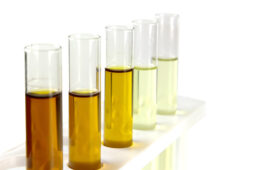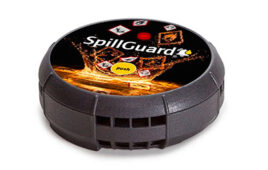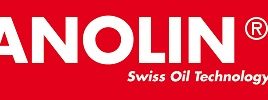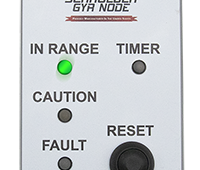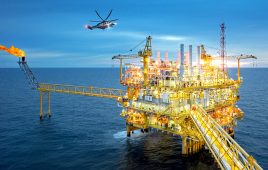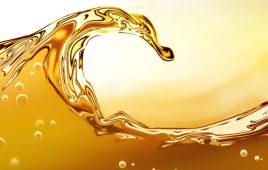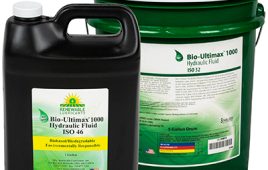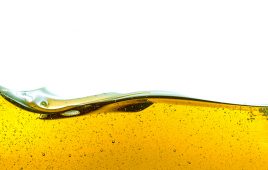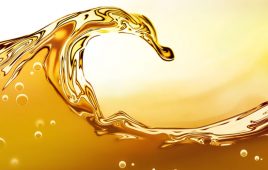IFPE conference programming will take in-depth looks at fluid cleanliness and life to ensure sustainable, efficient systems. As noted in my FluidLines column, both IFPE and CONEXPO-CON/AGG have a special focus on sustainability throughout the show floor and conference program. Several sessions will take looks at digitalization, electrification, and autonomy as solutions to creating more […]
SpillGuard leak recognition system provides early warning for leaks
Denios has introduced the SpillGuard leak recognition system, which instantly alerts users when a leak is detected. This unique, FM-approved technology is placed within the sump of a spill containment device, or near the equipment to be monitored, and alerts users with an audible and visual alarm for a minimum of 24 hours when contact…
Hydraulic technicians can’t stop making this one mistake
By Josh Cosford, Contributing Editor Nobody’s perfect – I certainly am not. It takes a level of self-awareness to admit you’re not perfect but exponentially more self-awareness to do something about it. Try as I might with my nutritional plan; I regularly fall short of perfection. But even if perfect was possible to manifest, even…
Panolin signs agreement to sell ECL business to Shell
Wholly-owned subsidiaries of Shell plc in Switzerland, the UK, US and Sweden (Shell (Switzerland) AG, Shell U.K. Limited, Pennzoil-Quaker State Company and Shell Aviation Sweden AB) have entered into agreements to acquire the Environmentally Considerate Lubricants (ECLs) business of the Panolin Group. The transaction includes the PANOLIN brand, ECL product formulations, intellectual property, technical expertise […]
Why water-glycol hydraulic fluid maintenance makes all the difference
Keeping equipment working at optimal performance with less downtime and supporting a longer life span are significant factors that make fire-resistant hydraulic fluids a safe and pragmatic choice. As in any hydraulic system, a strong maintenance strategy is vital to reduce component corrosion and thereby avoid the significant costs of replacing parts and unplanned repair […]
GYR Node Series monitors fluid condition using color
Schroeder Industries, an Advanced Fluid Conditioning Solutions company, is releasing a new product, The GYR Node Series. The GYR Node Series, Green, Yellow, and Red Nodes, are visual/electrical units that tell the hydraulic systems’ fluid condition using the universal color scheme. The GYR Node is easily connected to a Condition Sensor Interface (CSI-C-11) or a […]
Considerations for offshore oil & gas environments’ hydraulic technologies
By Josh Cosford, Contributing Editor Environmentally friendly fluids, corrosion resistance, and fire- and explosion-proof technologies are just some of the design options necessary in offshore use. Offshore oil and gas applications are one of the most demanding environments for a machine of any name, let alone hydraulic equipment. Offshore describes the open water, of course,…
What are environmentally acceptable lubricants (EALs) in hydraulics?
By Josh Cosford, Contributing Editor Environmentally Acceptable Lubricants, as far as the hydraulics industry is concerned, are fluids offering a reduced impact on the environment. EAL fluids are especially a concern for machinery operating on or around waterways, where the disastrous impact of potentially hazardous and toxic oil is most severe. Many environmental regulations require […]
Environmentally friendly hydraulic fluid for stationary and mobile use
Renewable Lubricants presents patented Bio-Ultimax 1000, readily biodegradable biosynthetic formulas which perform like mineral oil based hydraulic fluids, but are environmentally friendly. With oxidation performance comparable to full synthetics, this is one of the safest hydraulic fluids for the environment. Ideal for stationary or mobile environments, Bio-Ultimax super high Viscosity Index (VI) fluids are proven […]
How does aeration affect hydraulic systems?
By Josh Cosford, Contributing Editor Aeration is the introduction of air bubbles within a liquid by passing through or across open air. Aeration most often occurs in hydraulic systems when oil returns to the tank above the oil level in the reservoir, entraining bubbles as it splashes into the tank. The primary worry with aeration […]
A review of common hydraulic fluid types and their benefits
All hydraulic fluid is designed to transmit fluid power energy through a system, and for the most part, they do the job the same way. But that doesn’t mean all oil is the same. In fact, there are five common types of hydraulic fluid, each with its benefits and downsides whose use depends on the […]
